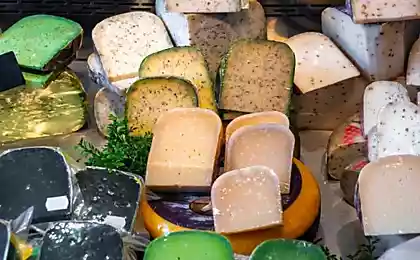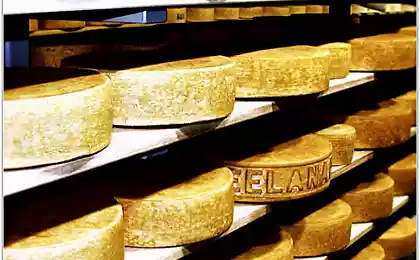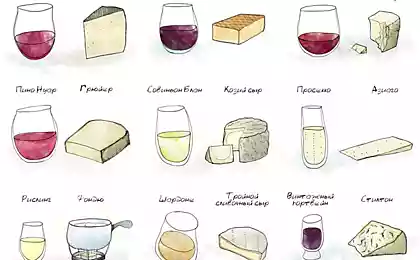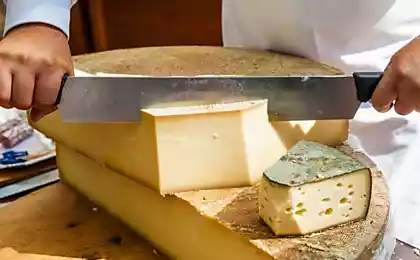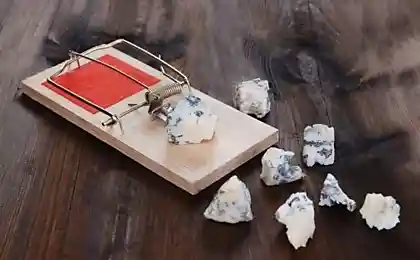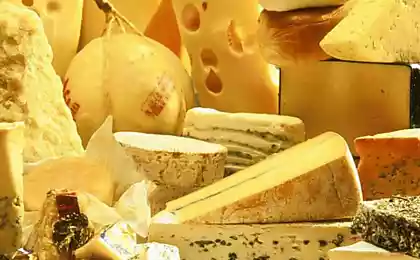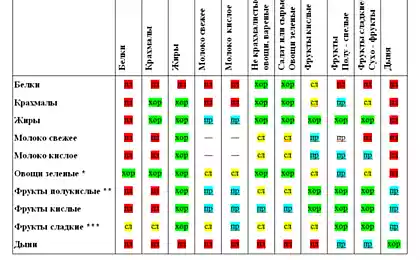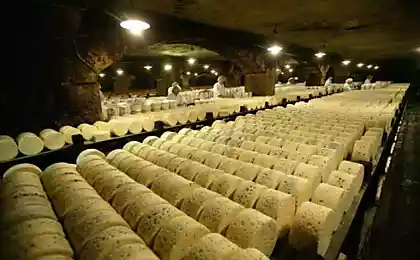2260
Fancy cheese
If you still think that cheese, like "Monty", is the strangest of all existing types of cheese, it is time to reconsider their views on this product
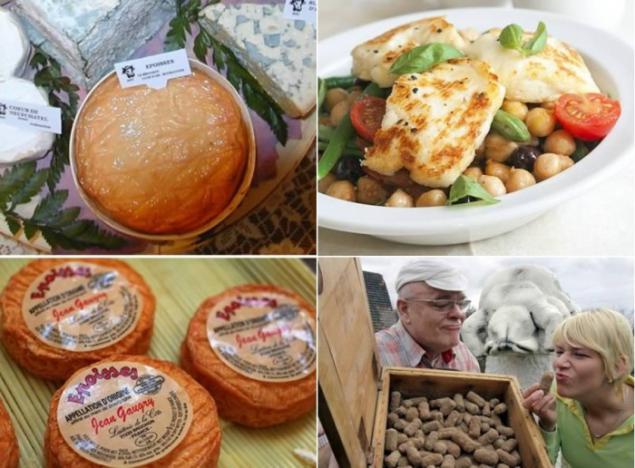
1. Stilton cheese (real gold)
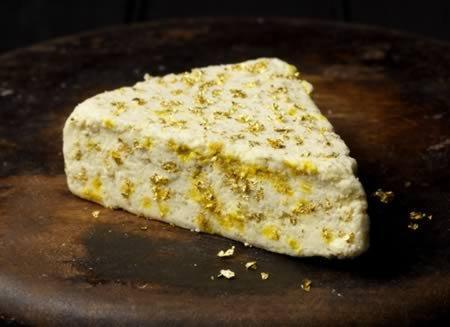
Cheesemakers have created something that will decorate any holiday menu - Stilton cheese (Stilton) of real gold. "Golden Clawson Stilton» (Clawson Stilton Gold) sold for $ 100 per 100-gram piece or $ 1,000 per kilo - is 67 times more expensive than Stilton.
This cheese was the most expensive British cheese in history, even to smear one cracker will have to pay 10 dollars. Clawson said that White Stilton is so expensive because of the fact that it is permeated with edible gold leaf and gold tincture.
The company claims that it has already addressed to the sheikhs and famous pop stars who want to try a unique piece of cheese.
2. Cheese Pula (the most expensive cheese in the world)
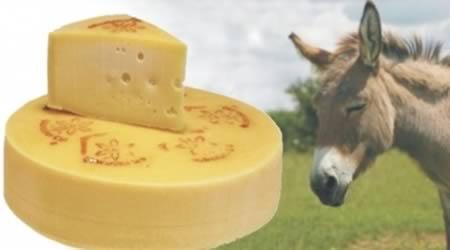
A pound of cheese Pula (Pule) will cost $ 1,700. This cheese is made in a nature reserve Zasavitsa in Belgrade (Zasavica Special Nature Reserve), Serbia (pool with Serbian language is translated as oslёnok). Justification for such a price? Donkey milk. For the manufacture of one kilogram of white fluffy cheese takes about 25 liters of donkey milk.
No other special ingredients to create this smoked cheese is not required. Its price is due only to the purchase price of milk (about 45 dollars per liter). However, the pool is not produced on a commercial basis, so even if you're a billionaire, you can not run to the store to buy a piece of cheese.
3. epuas Cheese (cheese so smelly that it is prohibited to carry on public transport)
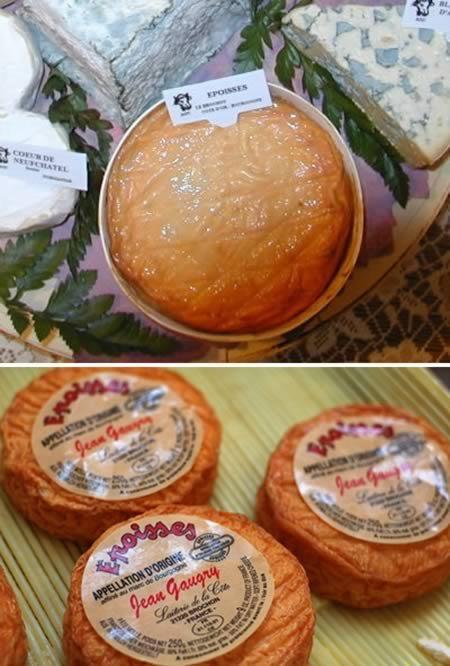
Epuas (Epoisses), one of the favorite cheese of Napoleon, is one of the most unpleasant smelling cheeses in the world. You to imagine his disgusting flavor: epuas forbidden to transport in the means of public transport in France. It is prepared from raw cow's milk and cake is washed apple brandy.
Epuas is strongly scented, soft cheese, but if he starts making a strong odor of ammonia, it should be thrown away - he was inedible. If it smells like someone who did not take a shower a week, enjoy!
4. Casu marzu (cheese with live larvae)
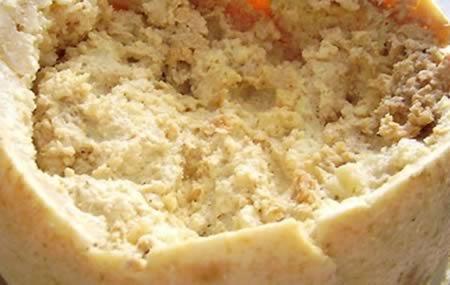
Casu marzu (Casu marzu) - cheese made from sheep's milk, popular on the Italian island of Sardinia. Its name means "rotten cheese" or how often it is called "cheese with maggots" - there actually live insect larvae.
In order to produce rotten cheese, you have to take a slightly different cheese - pecorino (pecorino sardo), but leave it to ferment longer than usual, as long as it will not rot. Cheese fly larvae are added to the cheese, and the acid from their digestive systems accelerates the breakdown of fat cheese, so that the product becomes soft and filled with fluid. By the time when it can have in Casu marzu live thousands of larvae.
The local population believes that there Casu marzu after the larvae have died, it is unsafe, so it is served until white worms in size 8mm More twitch in cheese. Some people clean cheese from larvae before they eat a piece, while others eat straight from the larvae. Those who eat cheese with maggots, should cover his hands - when they are disturbed, the larvae can jump to a height of 15 centimeters.
5. Milbenkeze (cheese made with excrement mites)
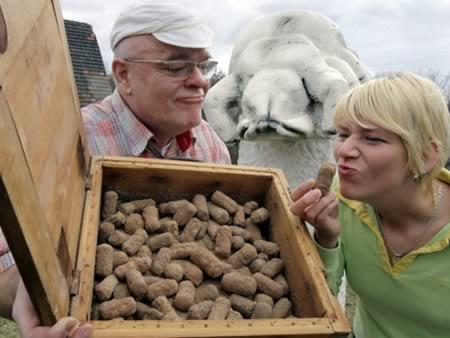
Germany, which produces more than 1 year, 8 million tons of 400 different kinds of cheese, cheese is considered to be power. Of all the types of cheese produced in Germany, you can select one - produced in Würchwitz (Würchwitz) through an unusual technology, which makes it unusual delicacy.
Milbenkeze (Milbenkäse) - cheese, which is obtained by leaving the curd at the mercy of thousands of dust mites, which make it a delicacy. Ticks secrete an enzyme that makes the cheese "mature": a month cheese acquires a yellowish tint, after three months it becomes brownish, and a year later the cheese turns into almost black lump adored by some cheese lovers. Bitter taste of cheese. By the way, it is considered that the cheese may have a healing effect that helps people do not develop an allergy to house dust. Ticks are eaten with cheese.
6. Halloumi (cheese that does not melt)
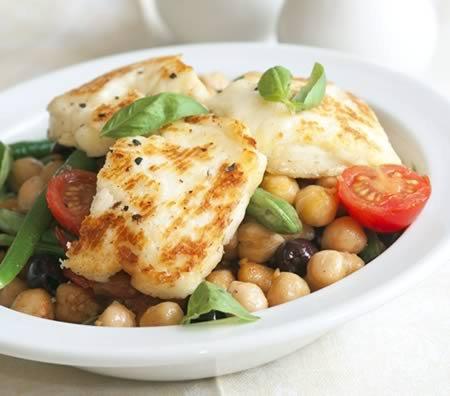
Halloumi (Halloumi) is the traditional cheese of Cyprus, an island in the Mediterranean Sea. Halloumi has a high melting point, making it possible to cook on the grill or broil. None kebabs Cyprus halloumi can not do without.
Also often eaten halloumi with watermelon in the warmer months of the year. Juicy slices of watermelon quite refreshing, and pieces of halloumi give unusual taste.
Halloumi is also part of the Cypriot meze starters kit, and if you order in the Cyprus Bar cold beer, you are likely to bring several pieces of halloumi.
7. Vieux Lille (the pungent cheese in the world)
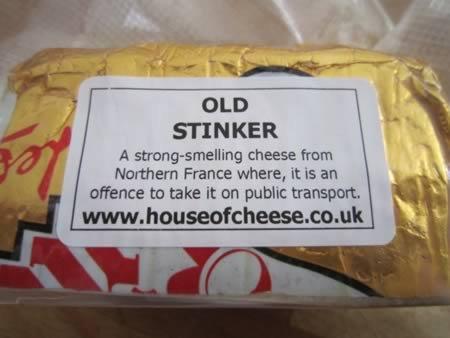
Merchants cheese «The Teddington Cheese», selling cheeses from around the world, awarded the term "caustic" very small number of types of cheese. The present value of this epithet is revealed by the fact that the icon for such cheeses - a man in a gas mask.
If you ask them to advise you on the most pungent cheese, Vieux Lille (Vieux Lille) is likely to be one of the contenders for the title. Pungent smell and sharp, salty taste scare off the faint of heart of this cheese. Cheese is also called «Puant de Lille» and «Puant Macéré», which allows to guess the nature of cheese - translated it means "stinky pickle."

1. Stilton cheese (real gold)

Cheesemakers have created something that will decorate any holiday menu - Stilton cheese (Stilton) of real gold. "Golden Clawson Stilton» (Clawson Stilton Gold) sold for $ 100 per 100-gram piece or $ 1,000 per kilo - is 67 times more expensive than Stilton.
This cheese was the most expensive British cheese in history, even to smear one cracker will have to pay 10 dollars. Clawson said that White Stilton is so expensive because of the fact that it is permeated with edible gold leaf and gold tincture.
The company claims that it has already addressed to the sheikhs and famous pop stars who want to try a unique piece of cheese.
2. Cheese Pula (the most expensive cheese in the world)

A pound of cheese Pula (Pule) will cost $ 1,700. This cheese is made in a nature reserve Zasavitsa in Belgrade (Zasavica Special Nature Reserve), Serbia (pool with Serbian language is translated as oslёnok). Justification for such a price? Donkey milk. For the manufacture of one kilogram of white fluffy cheese takes about 25 liters of donkey milk.
No other special ingredients to create this smoked cheese is not required. Its price is due only to the purchase price of milk (about 45 dollars per liter). However, the pool is not produced on a commercial basis, so even if you're a billionaire, you can not run to the store to buy a piece of cheese.
3. epuas Cheese (cheese so smelly that it is prohibited to carry on public transport)

Epuas (Epoisses), one of the favorite cheese of Napoleon, is one of the most unpleasant smelling cheeses in the world. You to imagine his disgusting flavor: epuas forbidden to transport in the means of public transport in France. It is prepared from raw cow's milk and cake is washed apple brandy.
Epuas is strongly scented, soft cheese, but if he starts making a strong odor of ammonia, it should be thrown away - he was inedible. If it smells like someone who did not take a shower a week, enjoy!
4. Casu marzu (cheese with live larvae)

Casu marzu (Casu marzu) - cheese made from sheep's milk, popular on the Italian island of Sardinia. Its name means "rotten cheese" or how often it is called "cheese with maggots" - there actually live insect larvae.
In order to produce rotten cheese, you have to take a slightly different cheese - pecorino (pecorino sardo), but leave it to ferment longer than usual, as long as it will not rot. Cheese fly larvae are added to the cheese, and the acid from their digestive systems accelerates the breakdown of fat cheese, so that the product becomes soft and filled with fluid. By the time when it can have in Casu marzu live thousands of larvae.
The local population believes that there Casu marzu after the larvae have died, it is unsafe, so it is served until white worms in size 8mm More twitch in cheese. Some people clean cheese from larvae before they eat a piece, while others eat straight from the larvae. Those who eat cheese with maggots, should cover his hands - when they are disturbed, the larvae can jump to a height of 15 centimeters.
5. Milbenkeze (cheese made with excrement mites)

Germany, which produces more than 1 year, 8 million tons of 400 different kinds of cheese, cheese is considered to be power. Of all the types of cheese produced in Germany, you can select one - produced in Würchwitz (Würchwitz) through an unusual technology, which makes it unusual delicacy.
Milbenkeze (Milbenkäse) - cheese, which is obtained by leaving the curd at the mercy of thousands of dust mites, which make it a delicacy. Ticks secrete an enzyme that makes the cheese "mature": a month cheese acquires a yellowish tint, after three months it becomes brownish, and a year later the cheese turns into almost black lump adored by some cheese lovers. Bitter taste of cheese. By the way, it is considered that the cheese may have a healing effect that helps people do not develop an allergy to house dust. Ticks are eaten with cheese.
6. Halloumi (cheese that does not melt)

Halloumi (Halloumi) is the traditional cheese of Cyprus, an island in the Mediterranean Sea. Halloumi has a high melting point, making it possible to cook on the grill or broil. None kebabs Cyprus halloumi can not do without.
Also often eaten halloumi with watermelon in the warmer months of the year. Juicy slices of watermelon quite refreshing, and pieces of halloumi give unusual taste.
Halloumi is also part of the Cypriot meze starters kit, and if you order in the Cyprus Bar cold beer, you are likely to bring several pieces of halloumi.
7. Vieux Lille (the pungent cheese in the world)

Merchants cheese «The Teddington Cheese», selling cheeses from around the world, awarded the term "caustic" very small number of types of cheese. The present value of this epithet is revealed by the fact that the icon for such cheeses - a man in a gas mask.
If you ask them to advise you on the most pungent cheese, Vieux Lille (Vieux Lille) is likely to be one of the contenders for the title. Pungent smell and sharp, salty taste scare off the faint of heart of this cheese. Cheese is also called «Puant de Lille» and «Puant Macéré», which allows to guess the nature of cheese - translated it means "stinky pickle."
